In 1854 gold was discovered at Mount Tarrengower which lead to the birth of the township of Maldon. After the residents petitioned for a railway line to the town, the railway line from Castlemaine to Maldon was constructed and opened in 1884. Several years later the railway was extended from Maldon to Shelbourne, with this section opening in 1891. Due to the proximity of Maldon station to Mount Tarrengower, the railway could not be extended from the station and a junction was created approximately 1km on the Castlemaine side of Maldon. The junction was originally named Laanecoorie Junction but was renamed to Shelbourne Junction at a later date (the final two caches in the series reveal the reason for this). This junction arrangement made Maldon one of the only stations in Victoria where trains had to change directions before continuing to their destination.
Both the Maldon and Shelbourne lines were built to 'light line' standards - 1 in 40 grades, sharp curves and 60 lb./yard rail. The Shelbourne line only had one intermediate station. Originally named Bradford, the name was changed to Pollard in the early 20th century. Pollard station had no sidings, so any wagons that needed unloading at the station had to be left on the mainline. This resulted in some very unusual workings between Pollard and Shelbourne. Wagons to be left at Pollard were attached behind the guards van at Shelbourne and dropped at Pollard; the next train to Shelbourne would attach the wagons to the front of the locomotive and propel them to Shelbourne (with the locomotive sandwiched between the wagon/s and the rest of the train!). The wagons would then be incorporated into the return train's consist and eventually reach Melbourne or wherever they were destined.
Originally, one mixed train (goods train with passenger wagons included) per day served the Shelbourne line. Around 1924 this was reduced to a thrice-weekly mixed. All passenger services were withdrawn during the Second World War and the goods service was cut back to once per week.
During the later years of steam hauled trains, J class locomotives dominated the line. Once diesels took over, T and Y class locomotives would have provided motive power.
In 1969 bushfires destroyed several trestle bridges on the Shelbourne line which lead to the line's official closure on the 1st of January 1970. Wagons which were stranded at Shelbourne were taken to Bendigo by road transport. By this stage the majority of the traffic on the line was grain from the silos at Shelbourne and the closure of the Shelbourne line ultimately lead to the closure of the line from Castlemaine to Maldon in 1976. The section from Castlemaine - Maldon has been restored by the Victorian Goldfields Railway and heritage trains operate on most Wednesdays and Sundays. I'd highly recommend a trip if you have time (trains depart Maldon at 10:30am and 2:30pm).
The track between Shelbourne Junction and Shelbourne station was dismantled sometime after the line's closure with most of the railway land sold. This makes investigating the line difficult as it can only be viewed from nearby roads. The first few kilometres of formation from Shelbourne Junction has not been sold off, nor has the site of Pollard station.
I have found some excellent photos of Shelbourne station online. The black and white photos were from the following website, which I highly recommend (It contains many photos of long closed branch lines - http://www.brownfam.com.au/trainpics.htm). The colour ones were taken by Weston Langford with the modern colour photos taken by yours truly. There are also some excellent colour photographs of Shelbourne station in the Train Hobby Publications book 'Country Branch Lines Victoria - Part 7'.
Enthusiast tour at Shelbourne prior to closure:
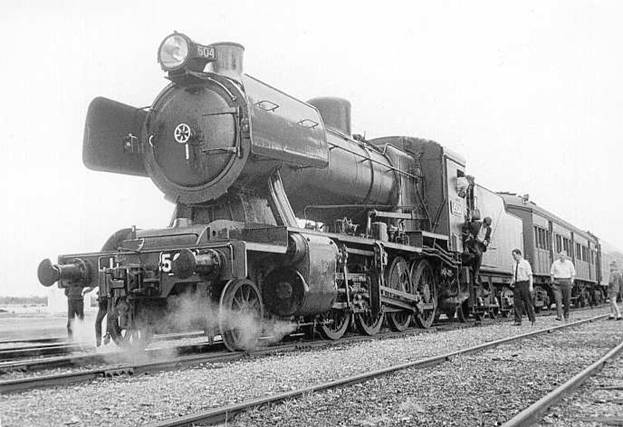
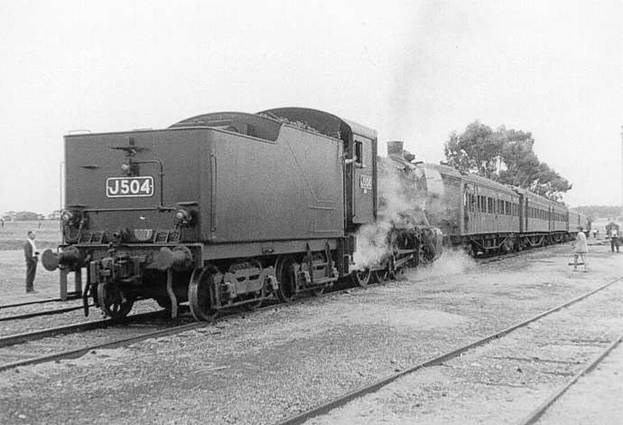 Shelbourne station in 1987:
Shelbourne station in 1987:
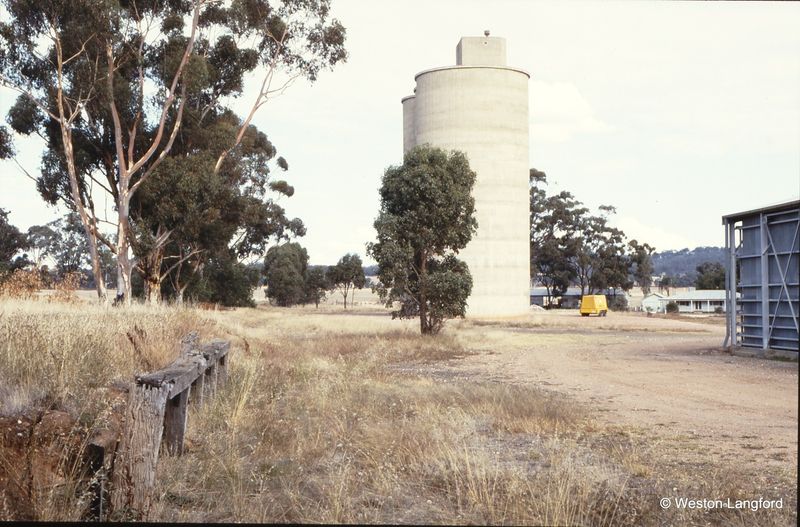


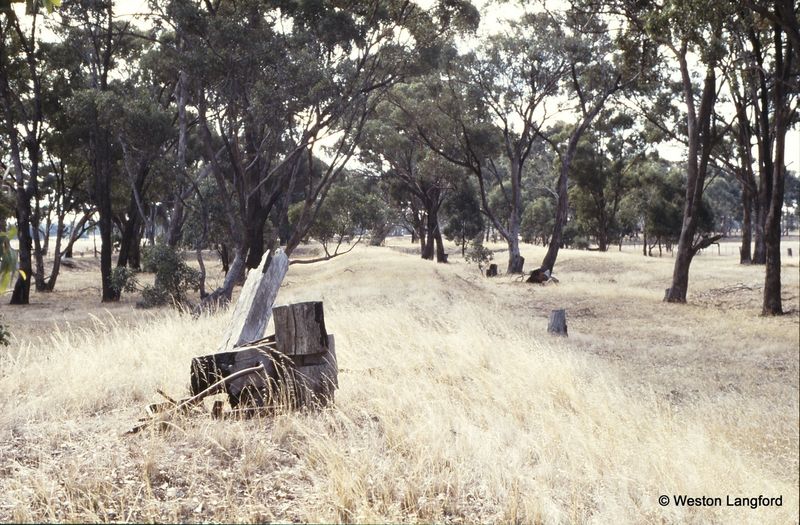 February 2015 Photos of Shelbourne station site.
February 2015 Photos of Shelbourne station site.

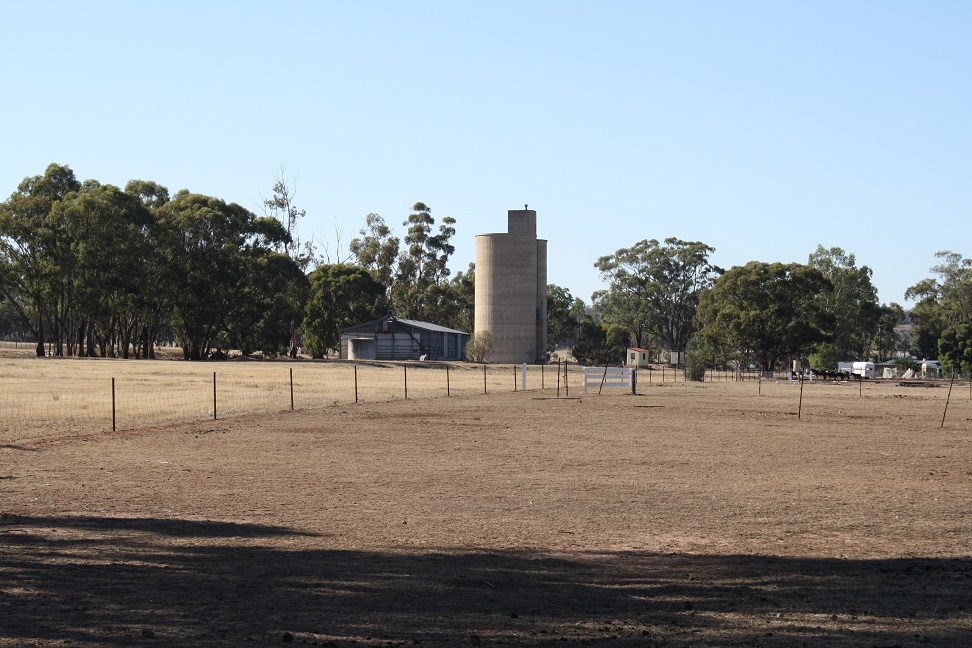 The derelict passenger platform at Shelbourne:
The derelict passenger platform at Shelbourne:
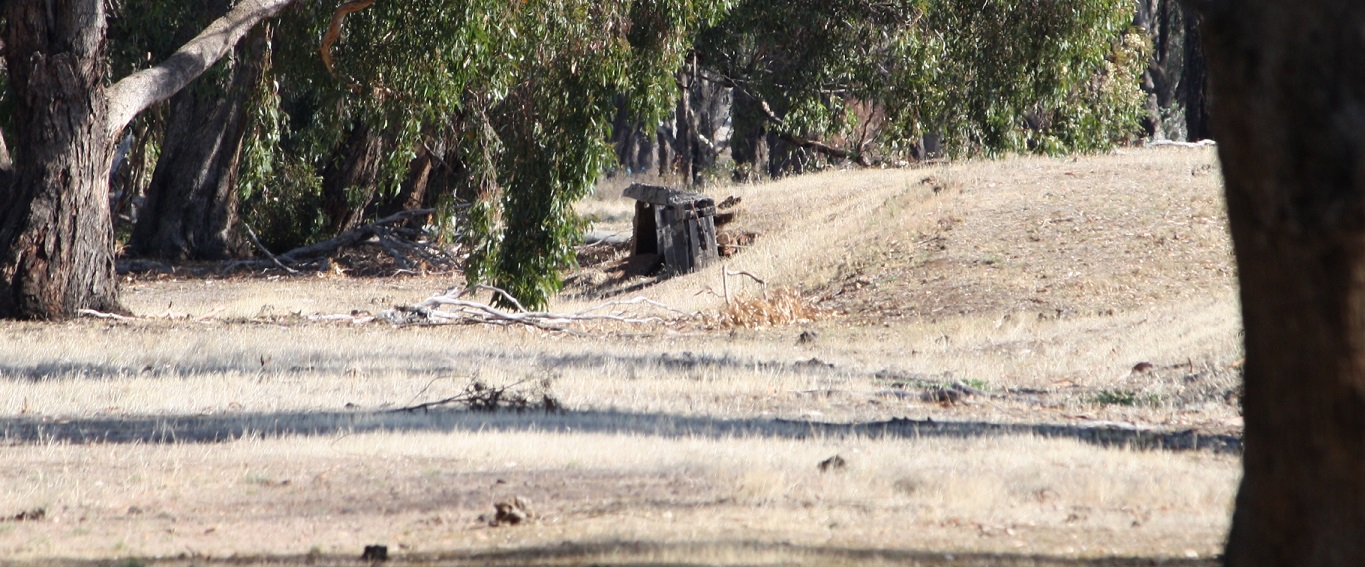 The final level crossing prior to Shelbourne station, looking towards Maldon:
The final level crossing prior to Shelbourne station, looking towards Maldon:
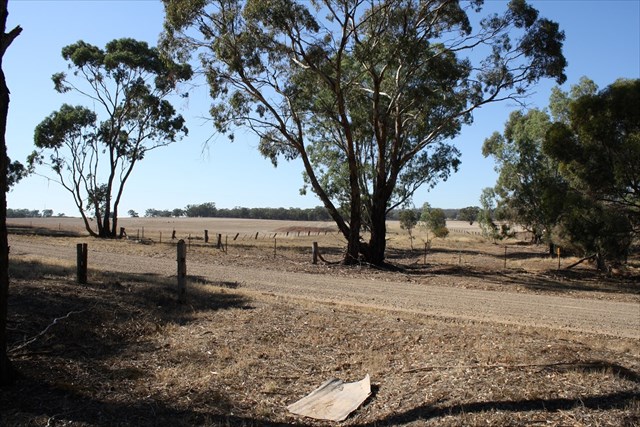
This geocache is located at Shelbourne station. Shelbourne station was the terminus of the line and is some distance from the town. The station site is private property but the disused wheat silos and associated buildings still exist on the site. The railway station and goods shed have been removed along with most of the rail infrastructure.
I spoke with a local who knew a lot about the area, whilst placing the cache. Apparently the station site is owned by the Wheat Board but the silos can't be used due to OH&S. They also can't be demolished due to their construction and the proximity of the nearby houses, so they've been left as is. Since the closure of the silos, the farmers have to take the grain to Dunolly.
The water for the steam engines came from a well on a nearby property, Crystal Waters (you'll see the entrance to this at the next cache in the series). The property was so named from the clear and clean water that came from the well on the the property, which was rumoured to never run dry.
Shelbourne station was on a 1 in 200 gradient, so once a train arrived wagons were often detached and allowed to roll into the sidings before the handbrake was applied. Despite the provision of a goods shed and loading platform, the passenger platform was the preferred location for unloading goods wagons.
Due to the proximity of the nearby houses I've made this an offset multi.
At GZ you will be standing near the point that the railway crossed the road and entered Shelbourne station. There are a number of upright fence posts nearby (no longer part of a fence) that are standing in a line. Count how many are standing.
If there is only one post, go to:
S36 53.078 E144 01.128
If there are three posts, go to:
S36 53.086 E144 01.239
If there are seven posts, go to:
S36 53.101 E144 01.364
Please be mindful of local wildlife. Snakes may be present in the area. Please also ensure the cache is well hidden before you leave.
Have fun!!!